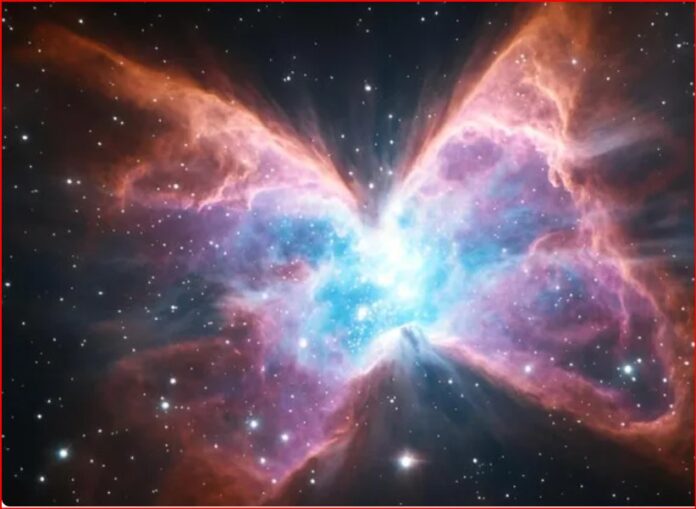Astronomers studying the “Cosmic Butterfly” — officially known as the Butterfly Nebula (NGC 6302) — believe they may have uncovered vital clues about how Earth and other rocky planets were formed. The nebula, located about 3,400 light-years away in the Scorpius constellation, is providing scientists with a striking view into the life cycle of stars and the recycling of cosmic materials that eventually create new worlds.
The research team’s findings, published in the Monthly Notices of the Royal Astronomical Society, were made possible by data from the James Webb Space Telescope (JWST). Through Webb’s advanced infrared imaging, researchers are now able to peer into regions of the nebula that were previously hidden, revealing complex structures of dust, minerals, and organic compounds — the same building blocks that make up Earth.
Watch a visualization of this discovery here: YouTube: The Cosmic Butterfly.
A Cosmic Butterfly Made of Life’s Building Blocks
Traditionally, the Big Bang theory has been used to explain the universe’s origin, but the Cosmic Butterfly offers a complementary perspective on how planets like Earth form from stellar remnants. The nebula’s glowing wings are composed of microscopic organic material and minerals, including heavy metals like iron and nickel (key to Earth’s core) and oxygen-rich molecules (essential to the planet’s crust).



